Burning Bright: Who Was Garfield Peacock?
A forgotten youth, remembered...
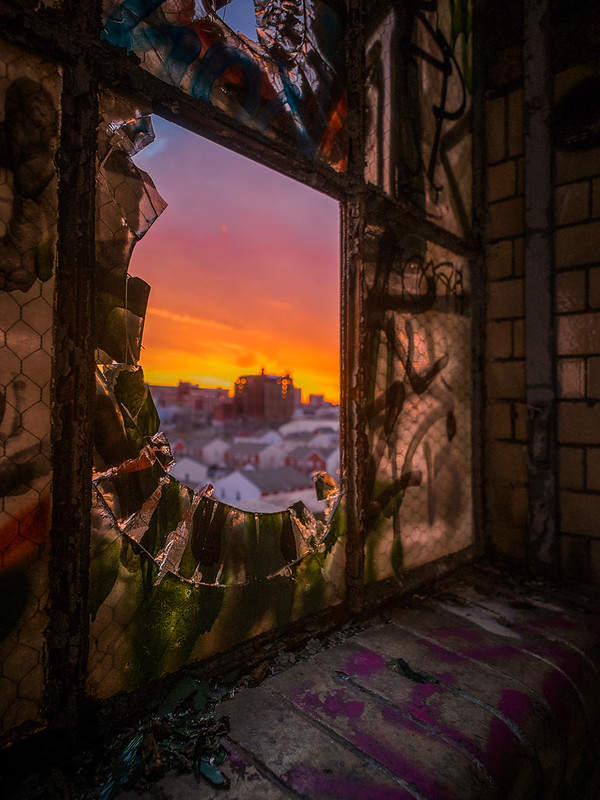
“Every city in the world always
has a gang, a street gang, or the so-called outcasts.” – Jimi
Hendrix
Originally published January, 2014
UPDATED 2/28/2015 -- I was contacted by Garfield's sister and it was a moving
conversation. See the addendum at the bottom of the page for details.
Not About Photography
No, this is not about photography; but
it is about art, about creativity, about opportunity... and about
failure. I'm going to tell you a little “Greek Tragedy” of a
story about heroes, hope, and sad endings.
Still, this story came to me as a
result of photography. I published a set of pictures from an urbex
run in north Philadelphia, Pennsylvania that I titled
“Disappointment” which referred to the fact that the photographic
subject we had intended to shoot (an abandoned power plant) was
sealed up and unreachable. Our fallback was the abandoned old site of
the Spring Garden Elementary School.
From the roof of this building,
shooting into a glorious sunset, I took a shot which contained the
also derelict “Divine Lorraine” hotel – which is the shot I
opened the blog with. Shortly thereafter a former reporter that
worked in Philadelphia in the late 1960's contacted me. He follows my work,
saw my photos and the title “Disappointment”, and told me an
amazing and tragic story of disappointment he experienced. His
account led me to dig up a couple of more sources on the story and
it's just too poignant not to share. It's a story that played out scant blocks from the old Spring Garden Elementary where we were shooting.
I have no photos from that era to which I have rights so the photos here are just decorative, taken in the cities of Chester and Philadelphia. There are four photos that are courtesy of Garfield Peacock's sister, Rosena Adderly Blackwell.
The Times
Parts of north Philadelphia in the
1960's were described to me as being “like Beirut in the 1970's”
– that is to say, when Beirut was blasted by long running civil
warfare. Buildings were falling in on themselves. Cars in various
states of abandonment, burned and stripped in many cases, were to be
found along many streets in the blighted neighborhoods. Although
there are still parts of the city like that, Philadelphia is not the
city it was then. Opportunity was a catch phrase, and not something
real to the poorer city residents – many of whom were black. Life
could be bleak.
As that opening quote from Jimi Hendrix
implies, in any environment like this the “gang” will form for
mutual advancement and self protection. The rules may vary, and the
details may be different – but the general idea is the same. It's a
matter of “us” and “them” and heaven help “them”. In a
subsistence environment, tactics for survival can be brutal.
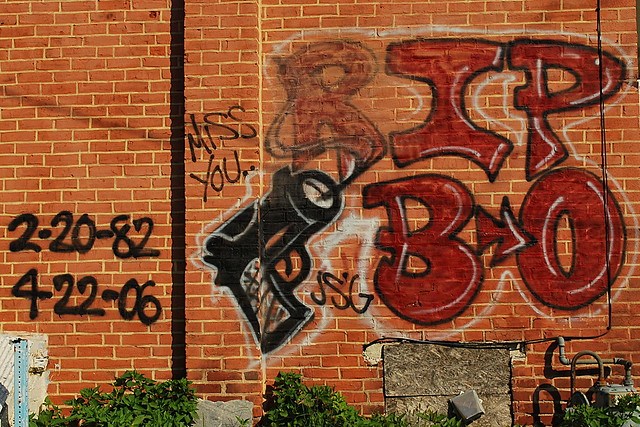
In the 1960's, Harold Haskins attempted
to improve “urban ecologies” and in particular by doing work with
gangs. One of the gangs he worked with was “12th and
Oxford” – a street gang in northern Philly. Haskins later became
a driving force in convincing gangs to disband and get an education.
His work ultimately led him to positions at the University of
Pennyslvania where he was an untiring advocate for student
development for 33 years before finally retiring in 2013.
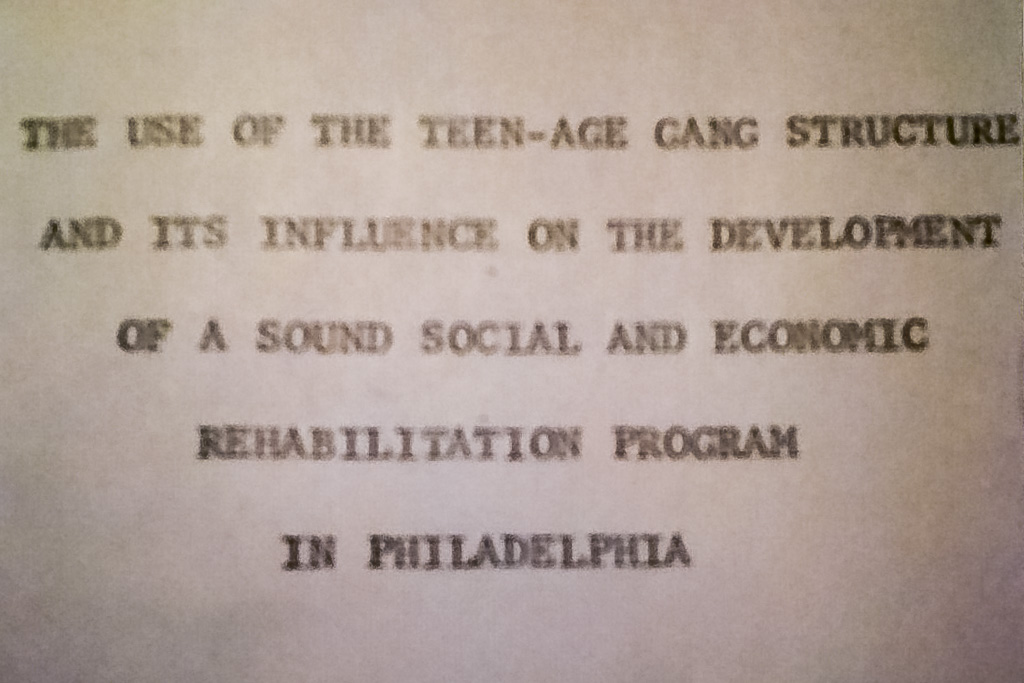
Photo courtesy of Rosena Adderly Blackwell
Haskins at the time worked as an
associate for community planning at Temple University. Among many
schemes to improve urban conditions, he conceived a project to have
gang members make a documentary about their lives. One of these
documentaries is an award winning 20 minute short film called “The
Jungle” which I'll link later. The entire project was written and
filmed by the gang members themselves.
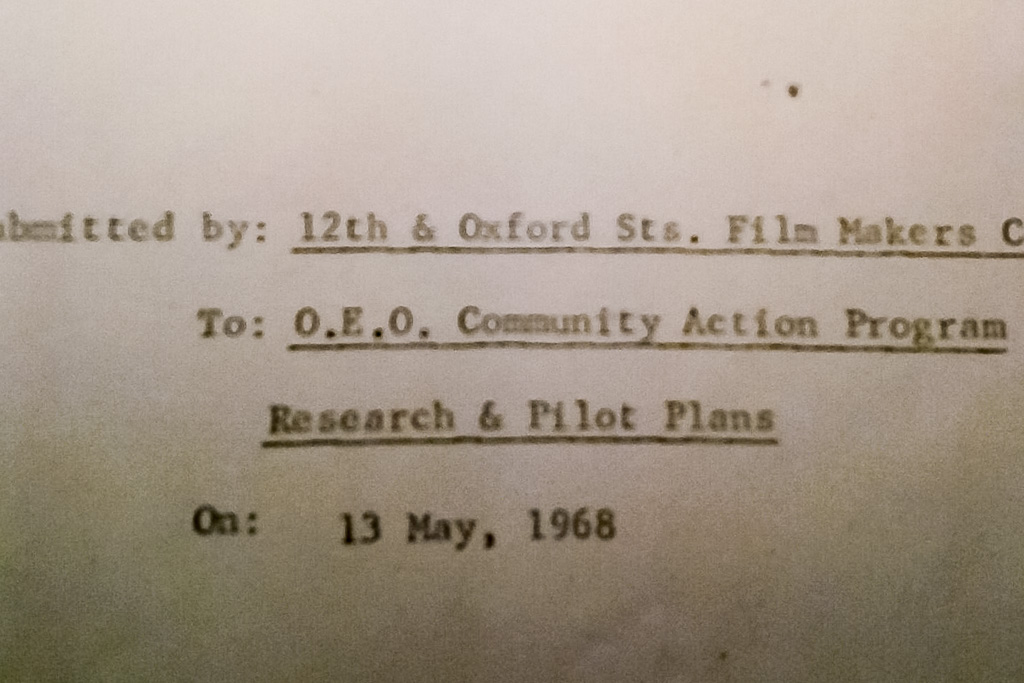
Photo courtesy of Rosena Adderly Blackwell
Sound and Fury
Today amateur filmmaking is relatively
easy and inexpensive. My reporter friend said this about making a
documentary in those days:
“In the 1960s, the ultimate in
film documentary production was exemplified by the work of Frederick
Wiseman and the Maysles brothers, Albert and David. It was the era of
fly-on-the-wall observation of people in real situations; cameramen
would spend extraordinary periods of time with their subjects in
day-to-day life. The goal was to become so familiar as part of the
surroundings that they would go unnoticed by the people being filmed.
To a surprising degree, they succeeded.
This was much more difficult to pull
off at that time. There were no camcorders, no portable video gear.
The smallest handheld 16mm camera was the Bell & Howell DR-70, a
former military issue item with three prime lenses mounted on a
turret. It could be held in one hand and was heavy enough and sturdy
enough to be used to bash someone's head in if necessary.
Sound-on-film cameras were much
larger. The documentary guys often used delicate Eclair 16mm cameras
coupled with a separate Nagra reel-to-reel tape recorder operated by
a sound man. TV news crews used Auricon single-system 16mm cameras
equipped with 400-foot film magazines. The film had a stripe of
magnetic audio tape along one edge to record a soundtrack. This
rig was carried on a shoulder mount. The camera body weighed in at 24
pounds plus 400 feet of film, plus the shoulder mount, plus the
weight of a 12-120mm Angenieux zoom lens.
I provide all of this mind numbing
detail to make it clear just how awkward and difficult it was to get
anything worth having on film, with sound, in that era.”
It's worth keeping in mind that this
gear was not only heavy – it was quite expensive as well. In our
media saturated age where every geek with a smartphone can make a
movie we forget that it used to be a very big deal indeed to produce
moving pictures with sound.
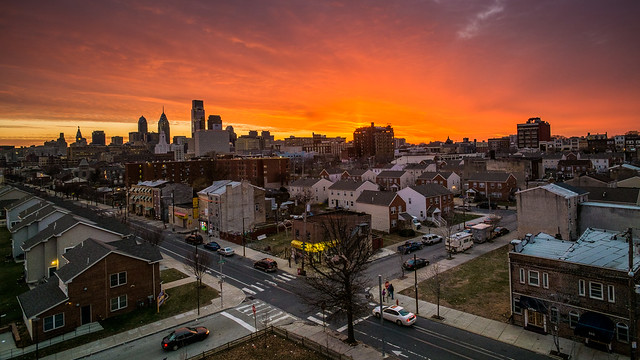
Haskins managed to get the attention of
the local media and had already pulled off a unique film project. He
conceived having gang members make an authentic film about their
lives as a vehicle for showing them what was possible for them. He
seemed to be showing them how to leverage what they already knew
about cooperation and overcoming difficulties. Later they actually
formed a corporation with their earnings from the film, buying
property and operating a neighborhood laundromat.
Amazingly, even prior to all that
attention, Haskins was able to convince WCAU TV in Philadelphia to
support the project and a cameraman came onboard from the TV station.
As my reporter source says:
“Phil Galligan, a cameraman for
WCAU TV, became involved in a project to teach members of a North
Philadelphia street gang -- 12th and Oxford -- how to use a
sound-on-film Auricon camera to document their life in the midst of a
decade or more of ongoing gang war in the city. These guys, most of
them in their late teen years, were killing one another at a rate of
40 per year. 12th and Oxford was one of the more dangerous. ”

In the 12th and Oxford gang,
one member stood out handling the awkward camera equipment, showing
both a conscious and instinctive affinity for the light and framing.
His name was Garfield Peacock. He became the main cameraman for the
group and as they later decided to make more films he was pegged as
their leader for camera work.
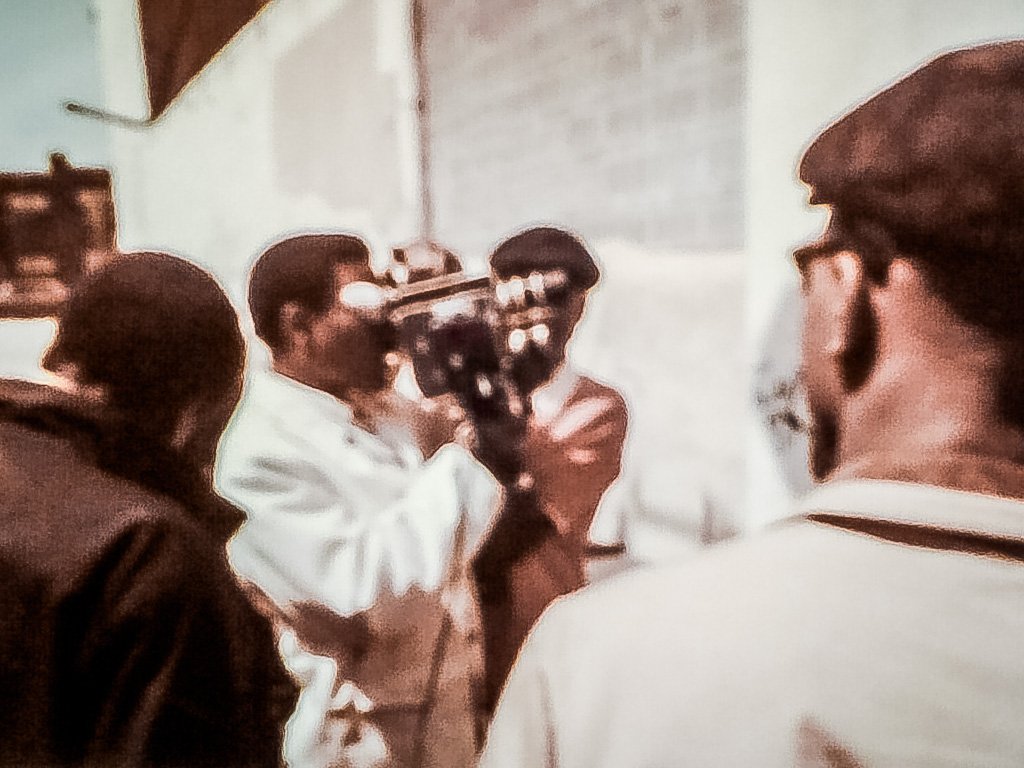
Photo courtesy of Rosena Adderly Blackwell
Enter “The Jungle”
I think this is a great time to
introduce you to the film that resulted, “The Jungle”. One thing
I ask as you watch it, watch it with eyes that look for the
brilliance in the camera work and story telling, not the crudeness of
the 16mm film production under uncontrolled lighting conditions. In
fact, as a devotee of photography by available light, I'd say
Peacock's use of backlighting to outline forms in an environments
where it was really too dark to shoot in is wonderful. It's crude by
today's standards, but still quite amazing.
As my reporter friend says, “Peacock
shot most of the film. It was obvious that this eighteen year old
North Philadelphia ghetto kid had enormous talent. His framing, his
reaction to and his use of light, and his ability to isolate subjects
was just astounding. If you ever look at the movie, look past the
artifice and the posing and see his technique. And consider the
plumber's nightmare pile of equipment he was working with.“
The violence was staged, and not too
badly. No one was killed in the making of the film.
New Beginnings, Sudden Endings
We've talked about the terrible times
then, about hope, and we have had a hero in the person of Harold
Haskins. Now, sadly, we come to the awful part of our tragic tale.
And such a sad ending it is: gang
members, raised in consciousness, turned into legitimate businessmen
embraced by the city council – it seems such a wonderful outcome
and in many ways it was.
Peacock was described to me as someone
who was a cut above – a gang member who actually embraced his
education even in the midst of the gang violence. He was a young man
with an awareness even prior to Haskin's arrival. He managed to
finish high school which was no mean feat in the midst of everything
going on around him.
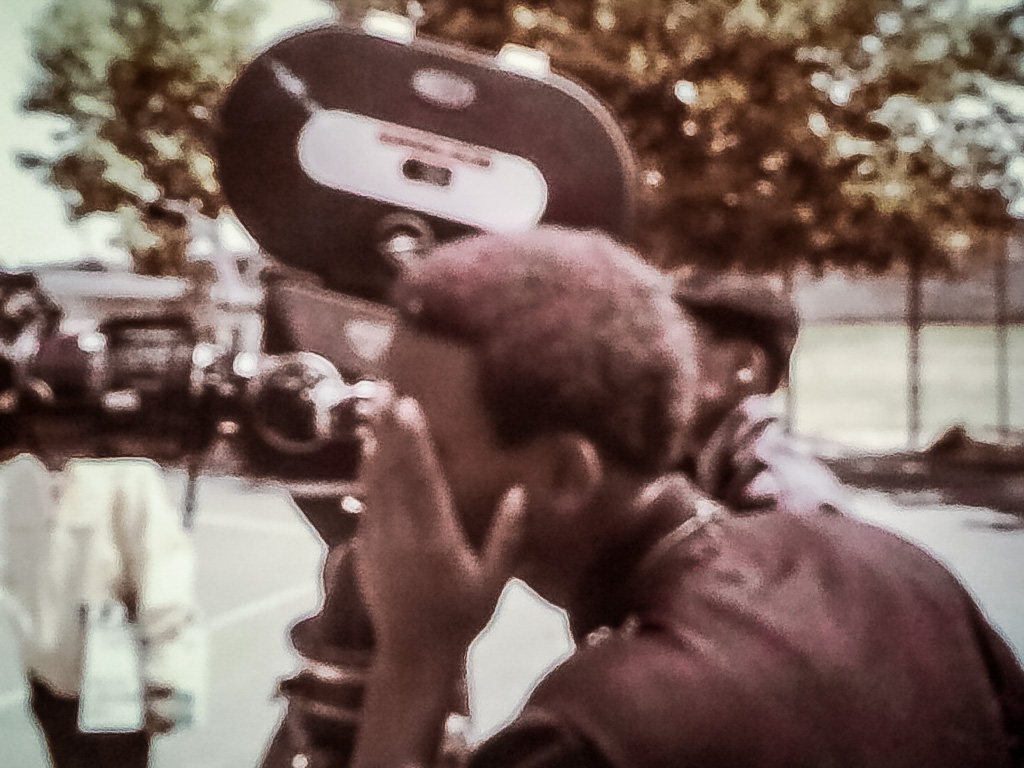
Photo courtesy of Rosena Adderly Blackwell
His qualities attracted the attention
of people in the media and academic communities who even found a full
scholarship for him at the Indiana University of Pennsylvania – a
free ride as long as he could keep his grades up. He was to start in
the fall of 1969. Things were looking up.
But in the summer of 1969 he was
murdered by a rival gang member with a sawed-off shotgun. The myth is
that he was shot simply for walking on the wrong side of the street
and there is a little truth in that, but not the whole truth.
Some accounts maintain it was jealousy:
the others in the community who had not been favored like the 12th
and Oxford gang were itching to take the 12th and Oxford
folks down a peg. That's likely true on a certain level, but an
alternate telling of the end of Garfield Peacock exists.
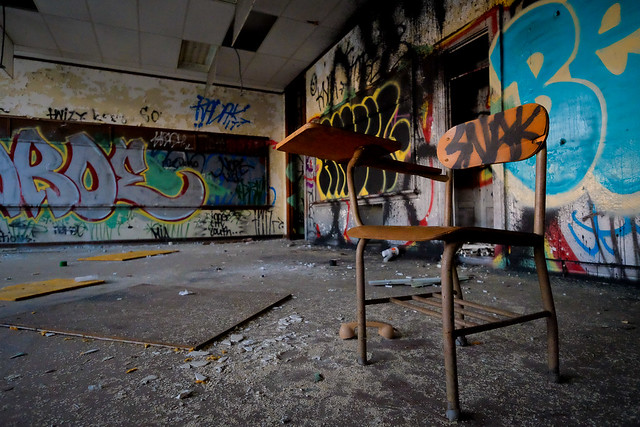
Principles and Consequences
The story is that Garfield stepped in to end the beating of a kid by another kid – a noble act. In the
process, he caused extreme resentment because the kid administering
the beating was from a rival gang. As another source revealed:
“Garfield Peacock was not shot to
death for just walking on the wrong side of the street. He had
crossed the street in order to break up a fight between two little
kids, one of whom was beating the hell out of the other. That side of
the street was in what the Marshall and Masters street gang
considered its turf -- and the kid well on the way to winning the
fight turned out to be the little brother of one of the leaders of
the gang. He did not appreciate 12th and Oxford's interference with
his younger brother and put out the word that Peacock was to be
killed. Garfield was hunted, day and night for two days, hiding out
in the abandoned buildings which made up much of the area.”
Desperate for help, Garfield finally
put in a call to WCAU cameraman Phil Galligan to help him. But it may
have been his undoing as pay phones those days were in plain view in
very public places. Peacock was apparently seen and pursued. The
story is that Galligan scoured the area to find him... but failed and
Peacock was found and shot by the rival gang.
And so ends the story of Garfield
Peacock... or perhaps not. There is no telling who he personally, and
through his story and example, might have inspired or instructed.
I'm sure there are many stories of
people who shined brightly, but briefly, and some we may never hear
of. But I was moved by this story and wanted to bring it to you in
the hopes of a little bit of “earthly immortality” for the memory
of Garfield Peacock.
Remember him, and maybe tell his story
to others.
Update - Garfield Peacock's Sister
I was totally amazed when I received a series of emails and photos from Garfield Peacock's sister. Here's a transcript of her remarks to me:
"My name is Rosena Adderly Blackwell.
Yesterday I was telling my daughter about my brother whom I do not remember. I have heard stories from my mother, bits and pieces but could sense she still was hurt.
I went on the internet and entered, who was Garfield Peacock, and there it was, all questions answered 45 years later.
I would like to thank you for writing a wonderful documentary and not letting his memory just vanish. Thank you for answering questions that I thought at this point, I would never find answers to. Much appreciated.
I'm just happy that my parents can rest in peace knowing after so many years, he is not forgotten. Several days before my mother passed, she saw Garfield but there was no one else in the room just us two.
Garfield had 2 sisters: myself and Marlene, who was actually old enough to remember the murder. Also two brothers Gary and Thomas.
You can add to the article what you choose. I thank everyone who has taken part of this bringing life to his death.
Be blessed."
References:
“A Red in the House: The Unauthorized
Biography Of S. E. Fleischman”, Stephen Fleischman, iUniverse
Press, 2004
Michael Matthews, retired reporter,
first hand account
Rosena Adderly Blackwell, Garfield Peacock's sister,
first hand account
The
Geneva Times newspaper, Page 2, June 26, 1969 (link appears to no longer work)
|